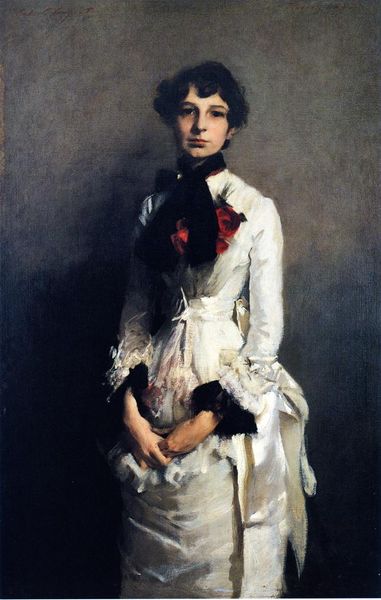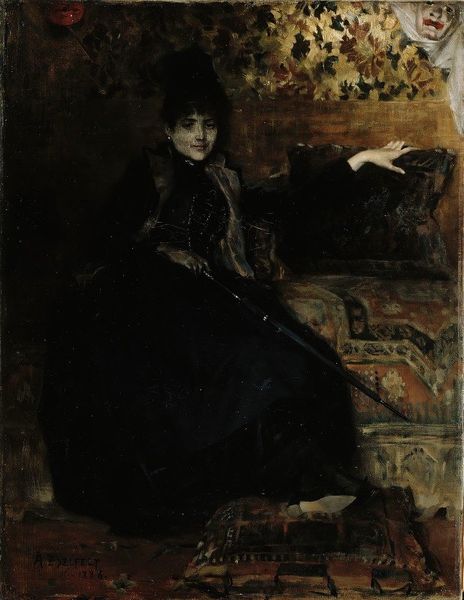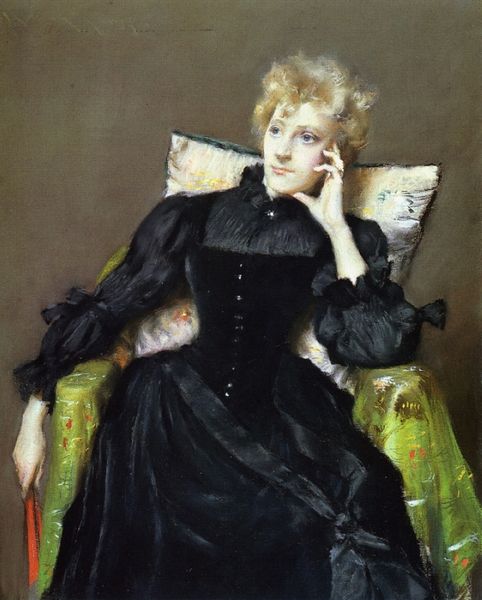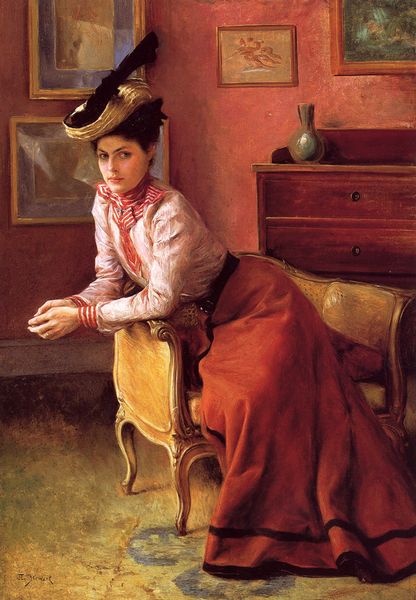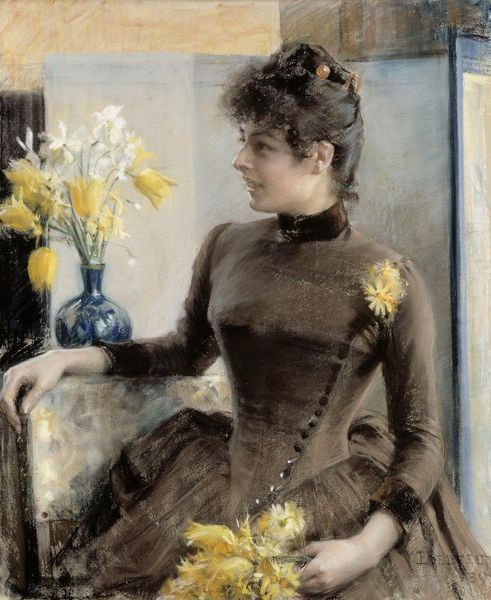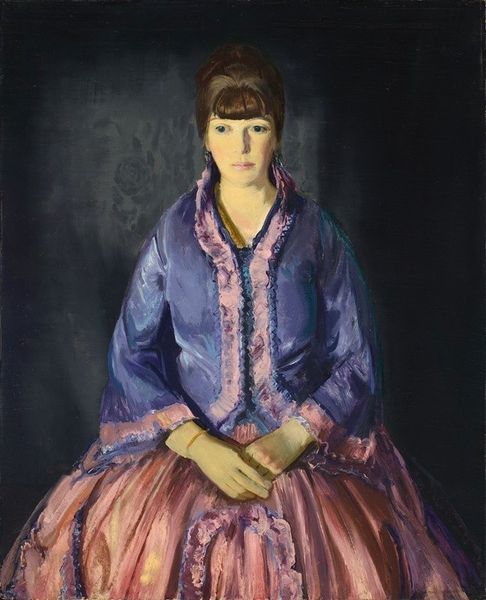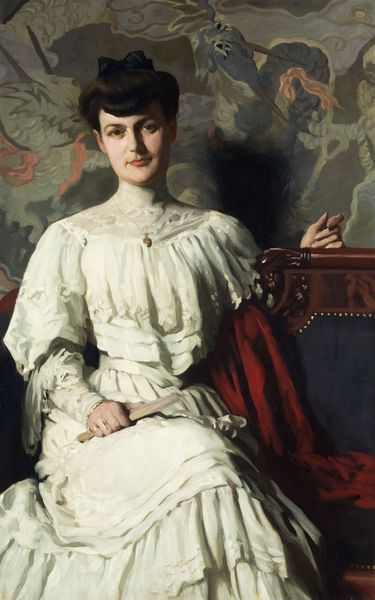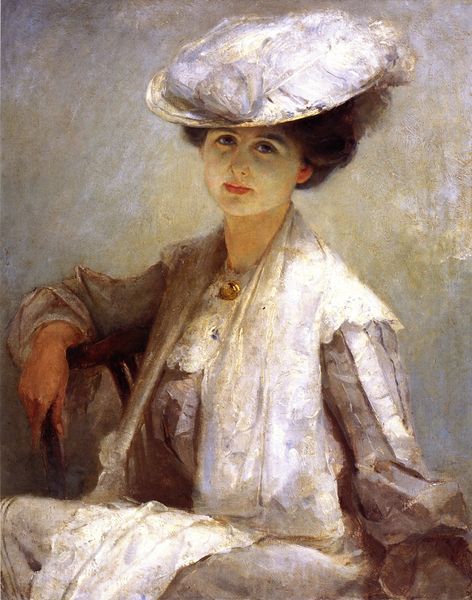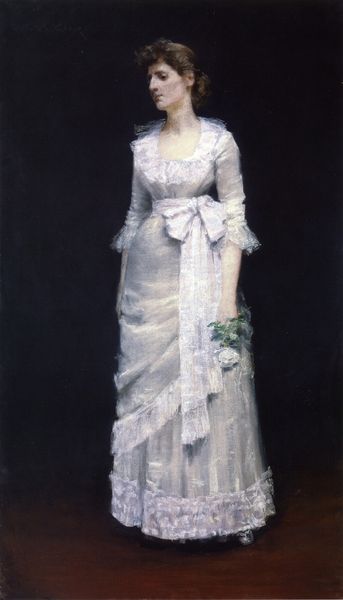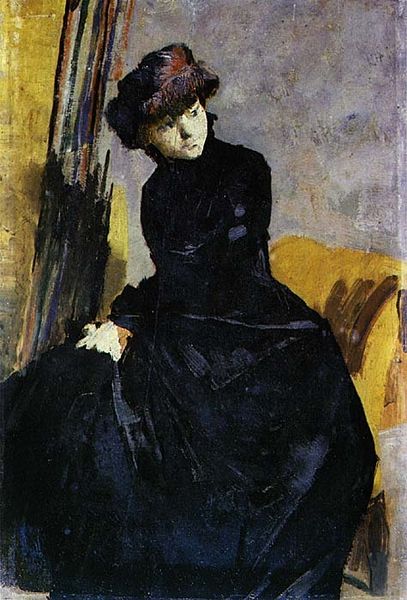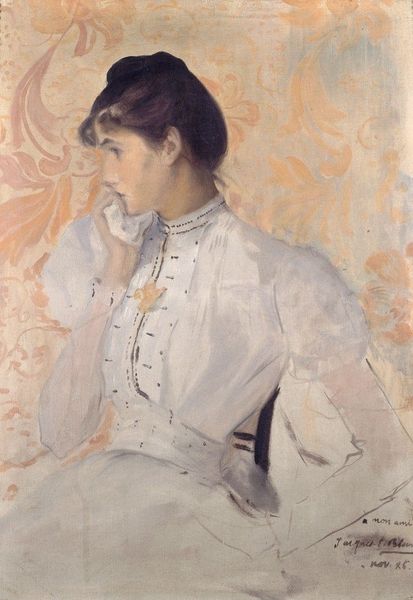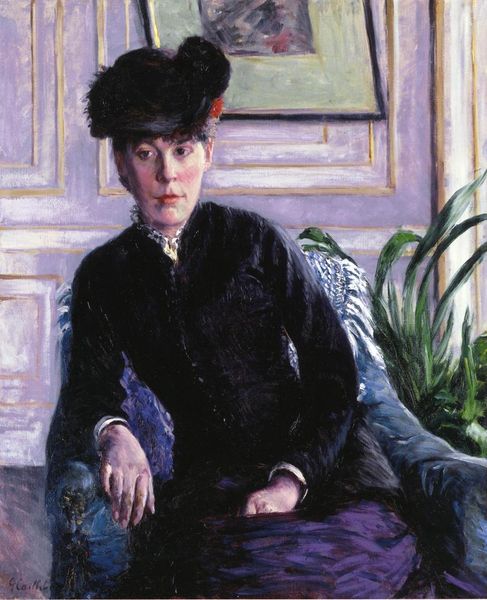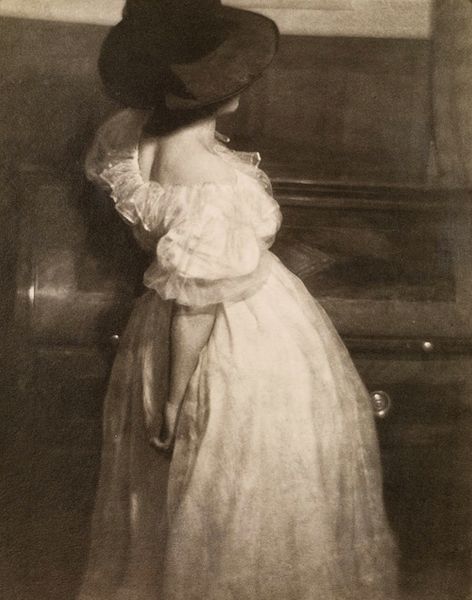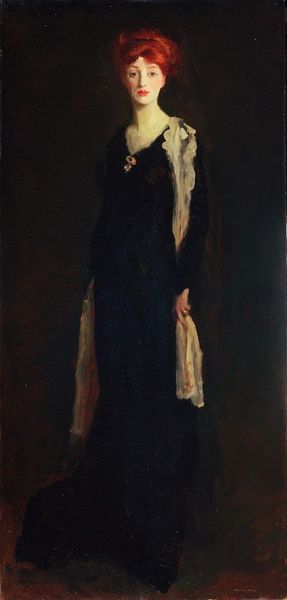
Copyright: Public domain
Theodor Severin Kittelsen created this oil on canvas painting, "In the waiting room," in 1886. The woman in the picture could be waiting for a doctor. The painting hints at the social conventions and expectations placed on women during that era. The woman's attire, including her veiled hat and gloves, signify modesty and adherence to social norms. The waiting room symbolizes a space of uncertainty, anxiety, and anticipation. Norway at this time was dominated by a conservative Lutheranism and a rigid class structure. Kittelsen himself struggled with depression, and that he worked mainly in the medium of illustration may also have been a cause. The image, therefore, may comment on the emotional landscape of women during a time of limited autonomy. Is the artist critiquing the institutions of his time? Delving into Kittelsen's biography, Norwegian social history, and medical practices of the late 19th century offers a more profound comprehension. Exploring the ways in which societal norms, gender roles, and personal struggles are visually represented in art enriches our understanding of its historical and cultural context.
Comments
No comments
Be the first to comment and join the conversation on the ultimate creative platform.
